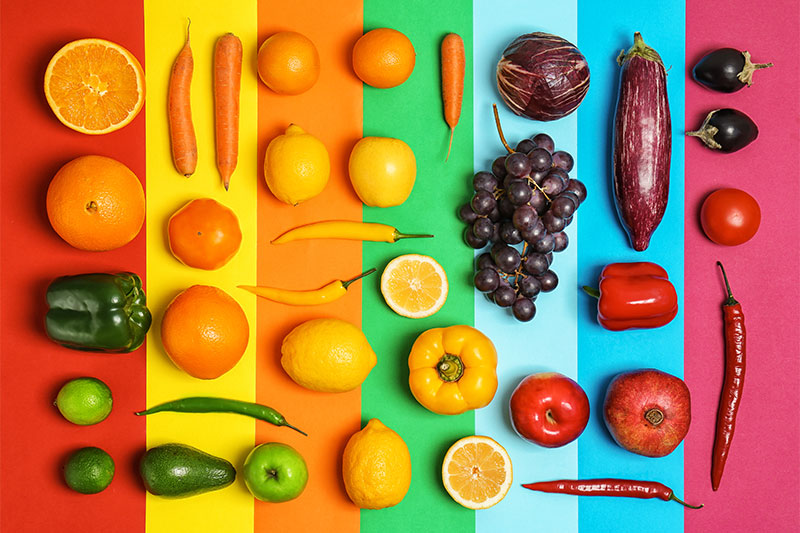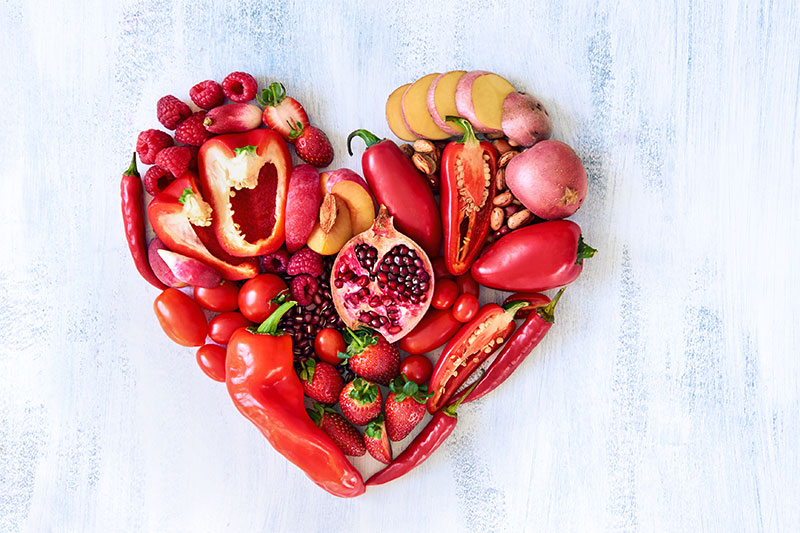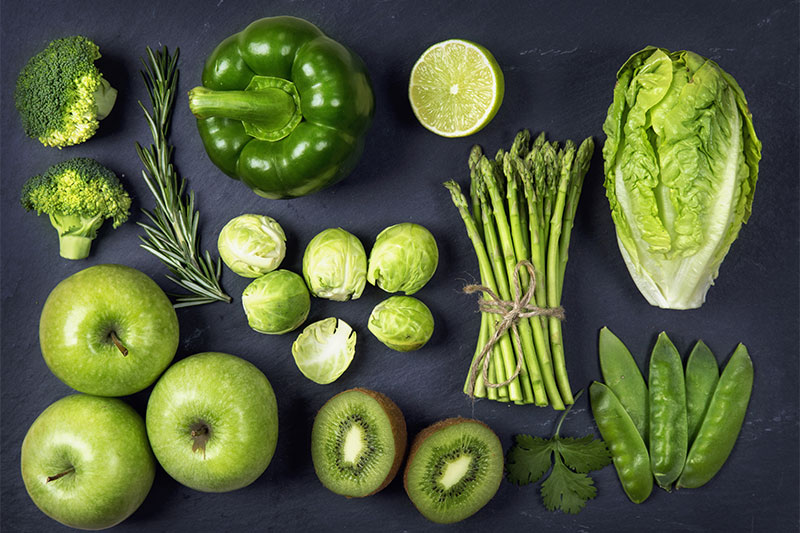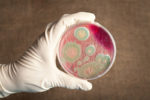Carrots are orange, beets are purple, bell peppers are red, yellow or green – almost the whole rainbow! Each fruit and vegetable we eat have their distinctive color, which tells a lot about its nutrient content and benefits.

Besides, eating colorful foods will make your dishes more appealing and appetizing, adding a lot to the experience of cooking and eating them.
Let’s take a look at what a food’s color tells us about its values and benefits.
The tail end of the rainbow: Red

Red fruit and vegetables are known to contain a cornucopia of phytochemicals (substances only found in plants) with numerous health benefits. These bright – or deep – red foods come with lycopene, that helps our body fight cancer, and anthocyanins (the pigment itself) that have antioxidant properties.
The list of red fruits includes tomatoes, strawberries, raspberries, cranberries, kidney beans, red onions, red peppers, and so on.
Orange

Orange colored fruits get their bright coloring from beta-carotene, a powerful antioxidant and a precursor to vitamin A. Aside from helping our body get rid of cancer cells, it also supports good eyesight and boosts the immune system.
Beta-carotene is found in abundance in orange colored fruits like carrots, mangos, sweet potatoes, apricots, yellow raisins and yellow peppers.
Green

Green fruit and vegetables get their color from chlorophyll, which helps them absorb solar energy and turn it into sugars through photosynthesis. It has a consistent content of magnesium, which helps your bones maintain their strength. But green vegetables have many more nutrients in them – antioxidants, minerals, vitamins and various phytochemicals that sustain your health.
Green veggies and fruits include leafy ones like kale and spinach, green peas, broccoli and Brussels sprouts, or fruits like kiwi or melon.
Violet (or purple)

Blue and purple fruits and veggies get their color from anthocyanins, that can appear anywhere between red and blue depending on the acidity of their environment. Aside from anthocyanins, these fruits and veggies also come with phenolics, vitamins, minerals and a series of other active ingredients. Blue and purple foods, especially blueberries, can help avoid the aging of the brain by improving nerve cell communication.
The list of purple foods includes various berries, purple grapes, currants, plums, eggplant, and red cabbage.
Yellow

Yellow colored fruits are known to be rich in alpha- and beta-carotene and most of them come with compounds known to aid digestion. Most of them also pack a large amount of vitamin C – I think this one doesn’t need presentation.
The list of yellow fruits and vegetables includes bananas, pineapples, lemons, star fruit, yellow peppers, yellow beans, and so on.
Eat the rainbow
Eating a colorful diet – and this time, you should take this literally – is a proven way to help maintain your health. Studies have proven the benefits of berries on the heart, the effects of chlorophyll on the body, and the list could go on forever. No wonder health professionals and nutritionists recommend eating a diet as colorful as possible. This way you can take care of the recommended five daily servings of fruit and vegetables, too.


